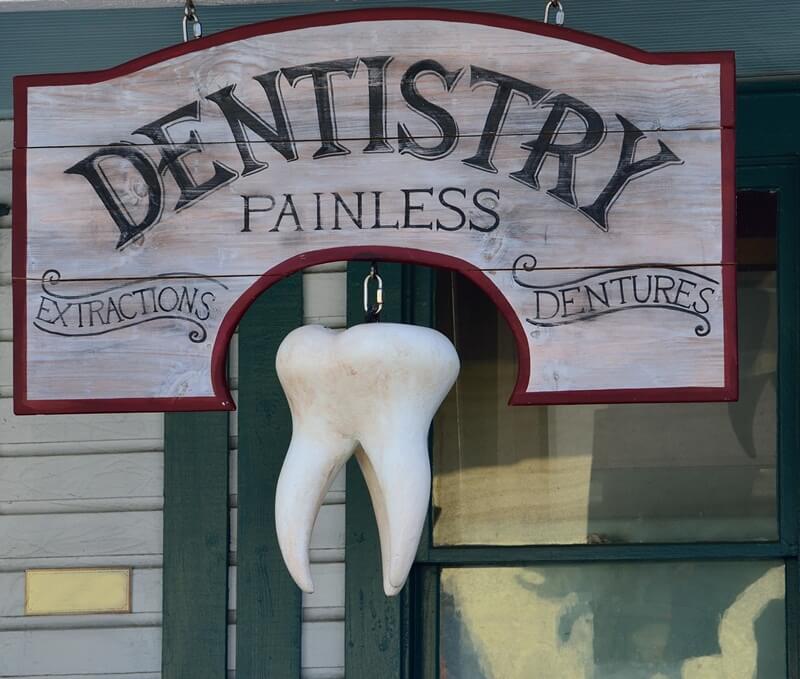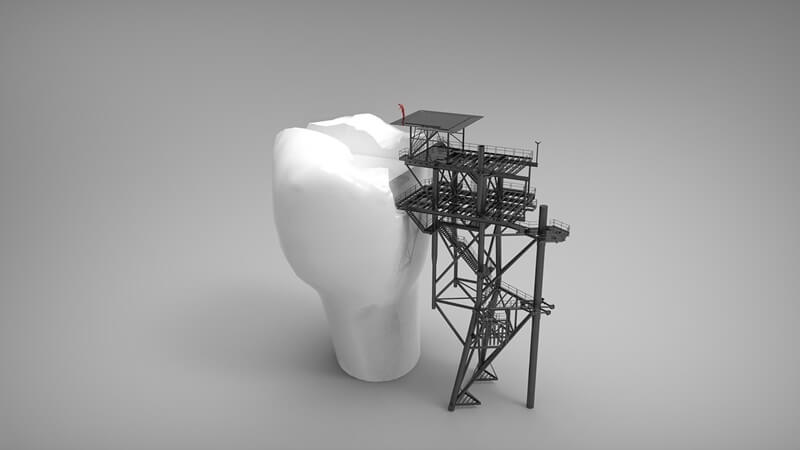A dental implant is a treatment that provides the permanent completion of missing teeth. There may sometimes be undesirable situations in this treatment that needs to be performed by an experienced and expert surgeon. Even if all the precautions are taken during the procedure, some things may go wrong. This will cause the dental implant to fail. Dental implant failure manifests itself with signs sometimes immediately after the procedure, sometimes in later periods. We have compiled 7 signs of failure for you.
Table of Contents
The Main Reasons of Dental Implant Failure
There are two main reasons for dental implant failure. These are unsuccessful osseointegration and peri-implantitis.
- Unsuccessful osseointegration occurs when the jawbone does not grow around the implant. After the implant is placed in the jawbone, it almost fuses with the jawbone. The jawbone grows in this area, ensuring a secure fixation of the implant. However, sometimes fusion may not occur due to the quality of the bone, smoking, the type of technique used, and the surgeon’s preference for bone grafting. Thus, the integration of the implant and the bone does not occur. This problem is mostly seen in the early stages after the surgery.
- Peri-implantitis can occur in case of inadequate and careless dental care such as tooth brushing and use of dental floss. It is a kind of infection where the infection damages the bone. If the infection is not noticed early, it can cause loosening of the tooth.
Read Also: FAQs About All on 4 Dental Implants
Signs That Show Dental Implant Failure
Dental implant failure manifests itself with some signs. By following these signs carefully, you can detect the problem early and perhaps reverse the situation. If you are late at this point, the consequences may be more severe. Signs that show the treatment is unsuccessful are as follows:

1. Gingival Recession
The recession of the gingiva around the placed dental implant is one of the signs of failure. The basis of this situation is the incorrect placement of the implant and the bone and gingival tissue that will hold the implant.
It will be enough to look at the treatment area to understand that the gingiva is receding. If you unusually see an implanted crown and if there is inflammation in the area, we can talk about gingival recession. To prevent this negativity, the implant must be placed in the correct position. Also, make sure you have healthy gingiva and teeth before and after the treatment.
2. Loose Implant
Another sign of dental implant failure is a loose implant placed. If the implant moves when you eat, talk or touch, it means there is a problem. When you notice such a situation, contact your doctor immediately. If the implant is left loose as it is, it can cause serious damage to your jawbone or negatively affect your smile.
3. Micro Movements
Sometimes surgeons may choose to replace teeth immediately after implantation. In this application, less time is given for the integration of the implant and the jawbone. Initially, this application will seem to be advantageous to you. This would mean getting your permanent teeth in a shorter time and going to fewer doctor checks. However, if your jawbone is not strong enough, problems may occur over time. The problem can be detected with an x-ray that will show the micro-movements of the implant.
4. Severe Pain
During the healing process, there will be some pain in your gingiva and treatment area. This is perfectly normal and will go away over time. Pain which is a sign of dental implant failure is more severe and not temporary. These throbbing pains mostly occur after the treatment. In such a case, you should contact your doctor immediately.

5. Difficulty in Chewing
If you have difficulty in biting and chewing while eating, the reason may be the failure of the treatment. After the healing process is completed after the treatment, there should be no difficulty in chewing and biting. If there is pain at this stage, contact your doctor immediately.
6. Swelling of the Gingiva
It is normal to have some swelling in the gingiva in the first days immediately after the treatment. These go away in a short time. However, if the swelling does not disappear, and if an infection occurs, it means there is an unexpected situation.
If your gingiva is swollen and red, this is a clear sign of an infection. The infection must be treated immediately. Otherwise, it may spread to other teeth, and may even mix with your blood. This means a serious health problem. Swollen gingiva is considered a dental implant failure. If such a condition develops, contact your doctor immediately.
7. Allergic Reactions
Symptoms such as loss of taste, swelling of the gingiva, and a tingling sensation are signs of an immediate allergic reaction. These are signs that the body does not accept the implant.
Early and Late Stages
Early signs of dental implant failure appear 3-4 months after the surgery. During the treatment, protocols such as ensuring dental hygiene, right flap design, stable placement, and placement where there are sufficient bones are applied. However, even if you prefer an experienced surgeon and all the procedures are done correctly, sometimes the implants and the jawbone may not integrate. This may be caused by:

- Infections developing in the mouth
- Insufficient blood supply to the implant area
- Movement and displacement of the implant
- Poor general health status of the patient
- Not giving enough time for the implants to fuse with the bone
By choosing an expert and experienced surgeon in his field, you can minimize such risks. Besides, it is also important that you provide detailed information about the medications you use, your general health status, and your diseases in the first meeting with your doctor.
Signs of dental implant failure can sometimes appear even after 10 years. The reasons are:
- Teeth grinding and clenching
- Bacterial infections
- Bone deficiency
- Poor oral hygiene
- Excessive stress on implants
- Exposure to radiation in the head and neck area
- Lack of gingival tissue
Other Possible Reasons for Dental Implant Failure
Although the most important causes of dental implant failure are unsuccessful osseointegration and peri-implantitis, there are also other different reasons. These can be listed as follows:
- Diabetes
- Smoking
- Gingival diseases
- Insufficient jawbone
- Medications
- Poor implant placement
- Cancer and similar diseases
Those with chronic health conditions such as cancer, diabetes, autoimmune disorders, and osteoporosis are at higher risk of failure. Even a person with periodontitis may be more susceptible to peri-implantitis and thus have an increased risk of bone loss and infection.
Conditions that cause tooth decay or gingival disease increase the risk of treatment failure. Therefore, special attention should be paid to oral hygiene. Apart from these, the bone level in the relevant area should be checked. If there is not enough bone density for treatment, a bone graft should be applied to the relevant area. Thus, the bone density will increase and the fusion of the tooth and the implant will be completed without any problems.

The position of the placed implant also affects the success. The intensive use of the teeth in the posterior region for chewing causes the implants placed here to be exposed to more stress. This may reduce the success rate.
Finally, it should be noted that there is a direct relationship between the surgeon performing the procedure and the failure or success of the dental implant. By choosing a specialist and experienced surgeon in his field, the risk of failure will be significantly reduced.
How to Understand That the Implant Has Deteriorated?
You need to go to a doctor’s check to understand that the placed implant has deteriorated. However, infection and swelling around the implant and movement of the implant are important indications. If such signs are noticed, you may think that the implant may have deteriorated. But remember that a doctor’s examination is necessary for the clearest answer.
How is it Treated?
Depending on the type of dental implant failure experienced, its treatment is performed accordingly. First of all, the gingiva around the implant should be cleaned from inflammation. Afterward, oral hygiene should be provided. After this stage, different applications can be performed depending on the type of problem. For example, bone grafting can be applied if there is a failure caused by insufficient bone tissue. Depending on the problem experienced, it may be possible to completely remove or replace the implant.
CONCLUSION
Dental implant failure is one of the issues that those who want to have the treatment are curious about. Unfortunately, as with any treatment, there is a risk of failure here as well. However, in case of failure, it is possible to replace the implant by removing it. Besides, you can significantly reduce the risk of failure by taking simple precautions. You can get more information about this subject from the specialist doctors of the Cosmeticium clinic and get rid of all your questions.
Fill in the Form Below to Get Answers to Your Questions Within Hours from Our Doctors About Dental Implants. (FREE)

